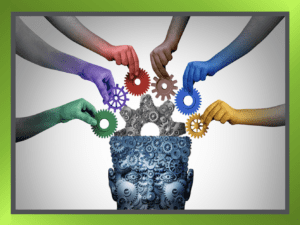Celebrating Neurodiversity Week
Neurodiversity Week 2025, from March 17th to 24th, offers a wonderful opportunity to celebrate the unique strengths and perspectives of neurodivergent individuals. The term “neurodivergent” was introduced by sociologist Judy Singer in 1997 to describe the natural variations in the human brain. Singer highlighted that conditions like autism, ADHD, dyslexia, and others are not disorders but natural differences that enrich our world.
Understanding Neurodiversity
Neurodiversity challenges the traditional medical model of disability, which views conditions as defects needing cures. Instead, it aligns with the social model of disability, emphasising that barriers are often environmental. For example, instead of focusing on “curing” a wheelchair user, society should provide ramps for accessibility.
The medical model’s influence persists in efforts to “normalise” behaviours, such as training autistic individuals to make eye contact. Instead, we should question the necessity of such norms and focus on inclusivity.
Challenges and Opportunities
Many neurodivergent adults face limited support, with conditions often underdiagnosed in women and minority groups. The diagnostic process can be daunting, and services are frequently child-focused.
It’s crucial to recognise that neurodivergent individuals may be on a journey of self-discovery, and their needs may change over time. Open communication and regular reviews can help address these evolving requirements
Neurodiversity in the Workplace
Embracing neurodiversity in the workplace offers numerous benefits. Neurodivergent individuals contribute unique skills such as creativity, systems thinking, and innovative problem-solving. However, it’s important to avoid stereotypes and appreciate the diversity within the neurodivergent community.
Tips for an Inclusive Workplace:
- Sensory-Friendly Environment: You can minimise fluorescent lighting, manage kitchen smells, and reduce background noise.
- Quiet Spaces: Provide areas for deep, uninterrupted work.
- Supportive Meetings: Allow doodling and fidget toys to aid focus.
- Continuous Education: Challenge assumptions and learn about neurodiversity.
Conclusion
This Neurodiversity Week, let’s commit to creating environments that celebrate all minds. By supporting inclusive workplaces, we not only support neurodivergent individuals but also enrich our communities.
For more information and resources, visit:
By understanding and embracing neurodiversity, we can build a more inclusive and innovative society for everyone.

